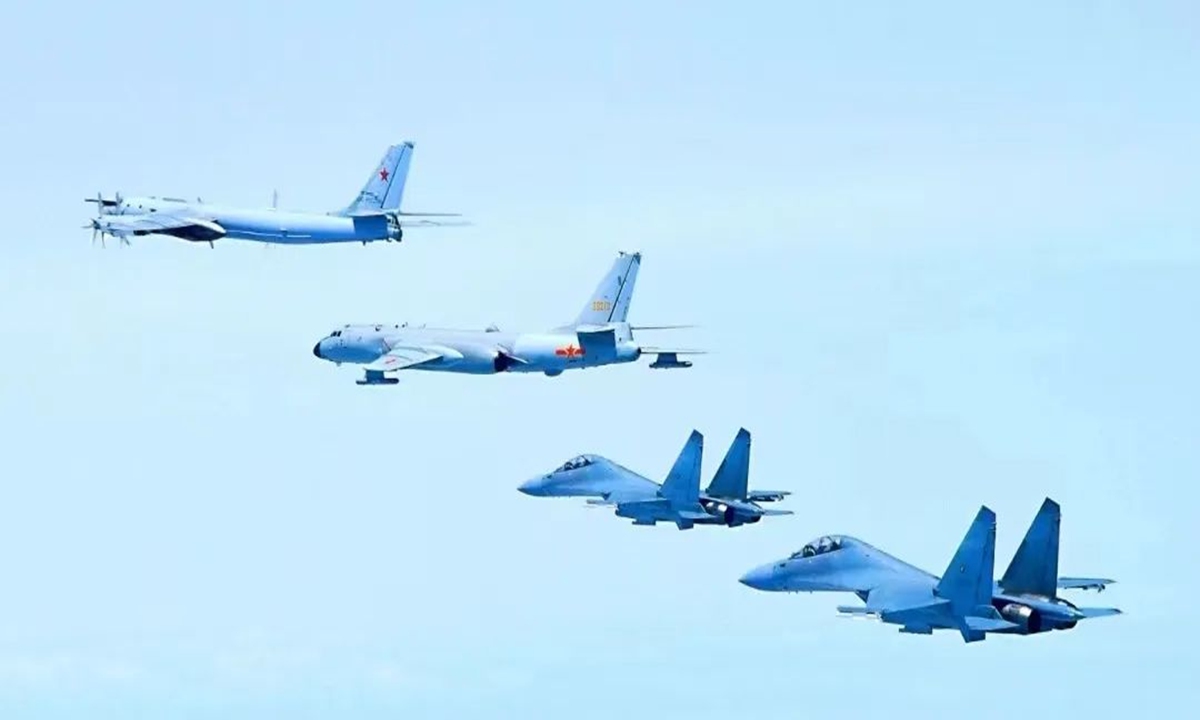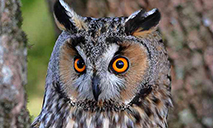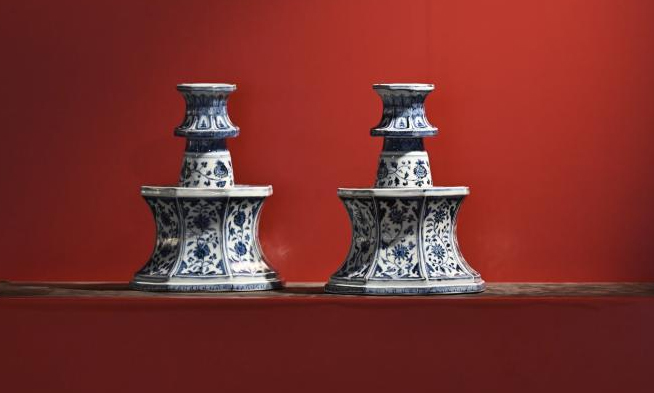China's J-16 fighter jets deployed in latest joint strategic patrol with Russia

Two Chinese J-16 fighter jets conduct an escort mission for a Chinese H-6K bomber and a Russian Tu-95MS bomber during a regular China-Russia joint strategic patrol above the Sea of Japan, the East China Sea and the West Pacific on May 24, 2022. Photo: Screenshot from China Central Television
In the first such move, China's state broadcaster revealed on Sunday that the Chinese People's Liberation Army (PLA) Air Force deployed fighter jets as escorts for Chinese and Russian bombers during last week's regular joint aerial strategic patrol in the Asia-Pacific region by the two major powers, with experts saying more advanced fighter jets like China's J-20 and Russia's Su-57 could join the patrol next time.
For the first time, China's J-16 fighter jets were seen participating in a China-Russia joint patrol, China Central Television (CCTV) reported on Sunday, showing a photo depicting two J-16s flying next to a Chinese H-6K bomber and a Russian Tu-95MS bomber.
The joint patrol the CCTV report referred to was held by the two countries' air forces above the Sea of Japan, the East China Sea and the West Pacific on Tuesday. It marked the fourth joint patrol of its kind since 2019, with the goal of examining and enhancing the interoperability of the Chinese and Russian air forces, and boosting strategic mutual trust and pragmatic cooperation between the two countries' militaries, said Senior Colonel Wu Qian, a spokesperson at China's Ministry of National Defense, on Wednesday.
It was the first time China has revealed detailed information about sending fighter jets for escort during a China-Russia joint patrol, a Chinese military expert told the Global Times on Sunday, requesting anonymity.
Russia's Defense Ministry said it sent Su-30SM fighter jets for escort, so China's J-16 deployment was a reciprocal arrangement, the expert said.
Since strategic bombers are not designed to engage in air-to-air combat, having fighter jets as escorts is also combat-oriented, analysts said, noting that both China's J-16 and Russia's Su-30 are heavy fighter jets that can contribute to the combat readiness of the joint patrol overall.
According to the photo, each J-16 carried two PL-10 close-range combat missiles, the anonymous expert pointed out, noting that the J-16 can also carry long-range air-to-air missiles.
The J-16 is characterized by its long range, twin engines, twin seats, a large fuel capacity and in-flight refueling capability, so it is very suitable for long-range escort missions, the expert said.
Japan's Ministry of Defense Joint Staff claimed that the Japan Air Self-Defense Force had monitored the China-Russia joint patrol, but its press release on Tuesday did not mention the presence of the J-16s or the Su-30s. Analysts said that it is possible that the Chinese and Russian fighter jets only partially escorted the bombers and did not get close to Japan's identification zone, or it is also possible that Japan simply failed to spot them.
In order to deal with the constantly changing battlefield environment and enhance combat capability, China must have enough fighter jets to ensure aerial strategic patrols can be carried out reliably, effectively and safely, Song Zhongping, a Chinese military expert and TV commentator, told the Global Times on Sunday.
With the development of military technologies, more advanced equipment like China's J-20 stealth fighter jet and Russia's Su-57 stealth fighter jet could participate in the next joint patrol, Song said.
This will lead to a significant boost to the fleet's comprehensive combat capability, Song said.
Photos
Related Stories
- PLA patrol necessary against Taiwan-U.S. collusion: spokesperson
- PLA-Russia aerial patrol unrelated to 'global or regional situations', ministry says
- PLA bombers hold drills in West Pacific 'in coordination with carrier group'
- Naval aviation regiment conducts anti-submarine training
- Choppers conduct high-intensity flight training
Copyright © 2022 People's Daily Online. All Rights Reserved.










